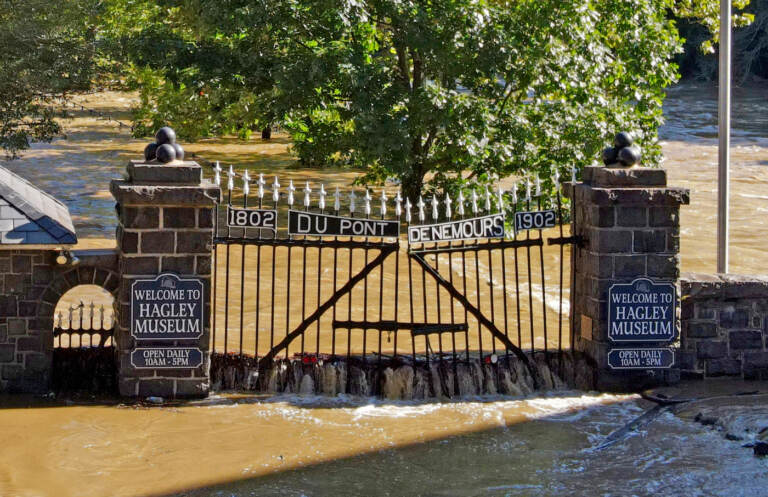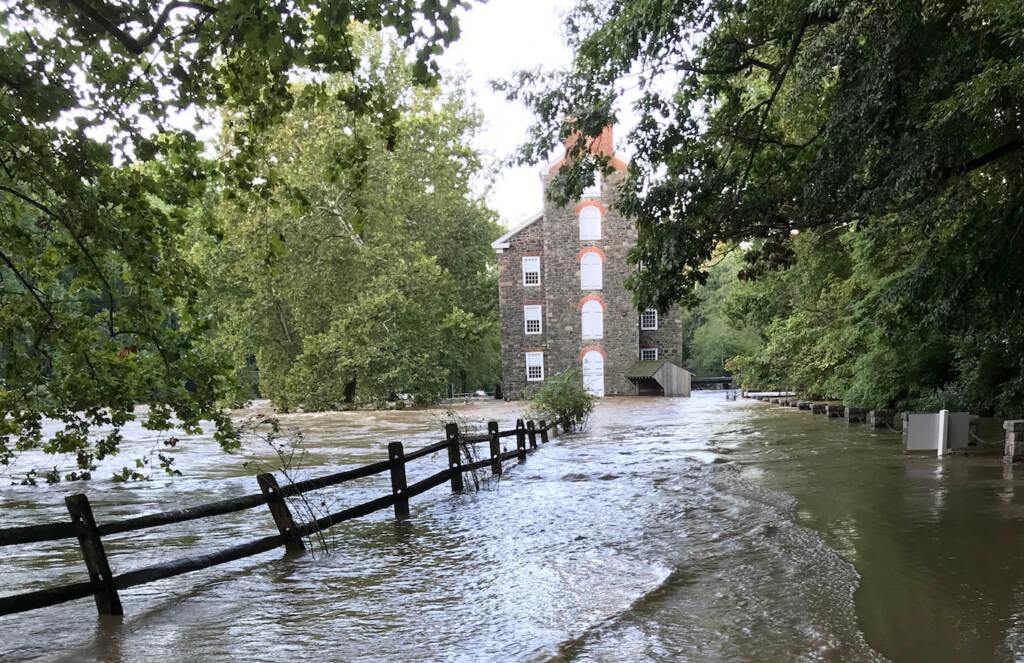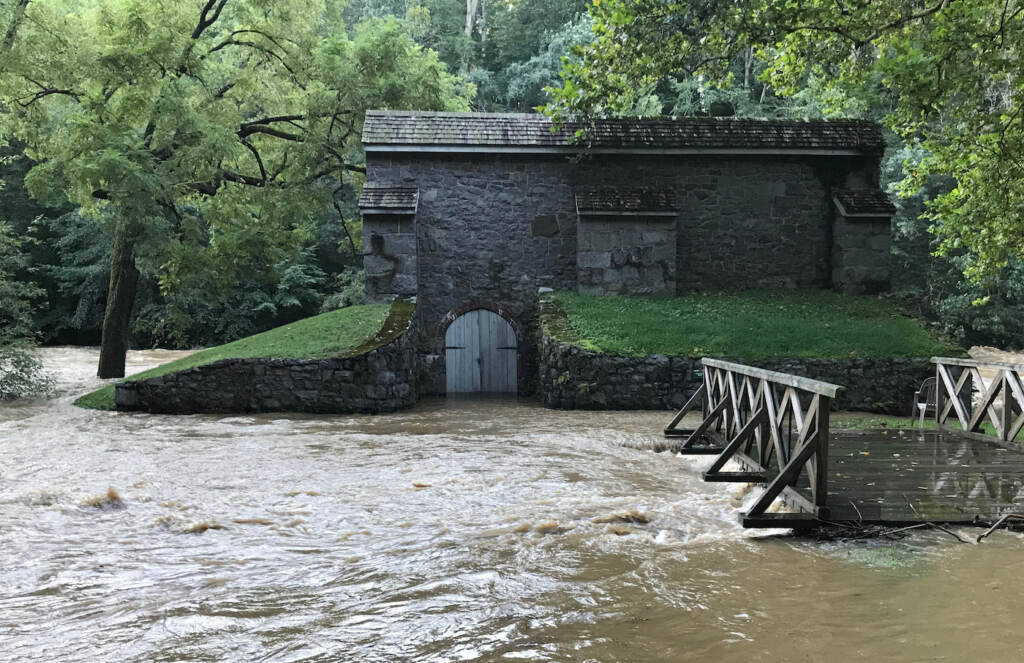Hagley Museum funds Ida’s flood damage repairs with sales of historic cider
The birthplace of E.I. DuPont in Wilmington saw serious flood damage from Ida. Now, a cider brewed from a historic orchard at the site will help fund repairs.

Located on the banks of the Brandywine River, Hagley Museum and Library suffered millions of dollars in damage as the remnants of Hurricane Ida dumped heavy rains on the region. (photo courtesy Hagley Museum and Library)
When the remnants of Hurricane Ida stormed through the northeast last month, lots of attention focused on the damage caused to people’s homes. From a tornado that devastated parts of South Jersey to severe flooding in Pennsylvania, the damage was widespread throughout our region.
With so much rain falling across the headwaters of the Brandywine River, which ends in Wilmington, some residents living along the water had to be rescued from their homes after surging water overflowed the banks.
Many businesses were also devastated. Further upstream in the city, the Hagley Museum and Library saw significant damage.
“It was so loud. You know, the water was just like one big waterfall in the powder yard,” said Jill MacKenzie, Hagley’s executive director.

The powder yard is the area right along the Brandywine, which used water-powered mills to grind gunpowder for the DuPont company more than 200 years ago. Company founder Éleuthère Irénée du Pont diverted part of the river to run through what are called “mill races” that turn the gears for grinding. Hagley offers tours of the mills and support buildings to demonstrate the history of the du Pont family and the company they founded at the site in 1802.
As the heavy rains fell near the headwaters of both the east and west branches of the Brandywine in Honey Brook, Pa. on Wednesday, September 1, MacKenzie knew it wouldn’t be long before the effects were felt downstream.
“I remember the night before, when Hurricane Ida remnants were hitting us, hearing that Honey Brook had had like eight inches of rain. And that was the first time that my brain was like, ‘Oh no,’” she said.
As the water rose Thursday morning, it caused about $2 million in damage at Hagley.
“The river and our mill race actually became one body of water. And so there was this current from the river actually flowing over the powder yard grounds itself,” MacKenzie said. “Every inch got scoured out. All you see right now are tree roots and big pots and pits.”
Hagley is still open for tours, but the powder yard area remains off-limits.

To help fund repairs, Hagley is turning to its historic roots. A portion of sales of cider made from a more-than-200-year-old orchard on the property will go towards rebuilding damaged areas.
Shortly after establishing the gunpowder mills, E. I. du Pont planted an orchard near Eleutherian Mills, his home on the property, in 1804. The orchard included nearly 400 peach, pear, apple, plum, and cherry trees. The grove was considered one of the finest in early America, with its fruit highly sought after.
Over the years, the orchard languished but has been brought back to life. The fruit is being transformed into cider as part of a cooperative effort with Wilmington Brew Works. The first variety of The Fruits of Eleutherian Mills cider, using Montmorency and Black Tartarian cherries, was unveiled in July. The second variety is being released in time for Hagley’s annual craft fair this weekend. Using historic varieties of Oldmixon and Jones peaches, Wilmington Brew Works cidermaker Ryan Rice has incorporated the fruit into his mix.
“In addition to co-fermenting with peaches, we added puréed peaches after fermentation,” Rice said. “The ending result is a semi-sweet cider that is much more fruit-forward. It has a wonderful fresh peach nose and tastes like eating a peach right from the orchard at Hagley.”
At Saturday and Sunday’s craft fair, a five-ounce pour will cost $3 with all proceeds directly benefiting Hagley.
“They’re delicious,” MacKenzie said. “They’re really dry. So, there’s just a hint of sweetness, but it’s not like you think of an apple cider. That’s very sweet. These are, I think, definitely more for the palates of individuals who like a drier wine.”
This month’s apple harvest will be used for another cider later this year.
WHYY is your source for fact-based, in-depth journalism and information. As a nonprofit organization, we rely on financial support from readers like you. Please give today.







